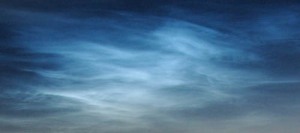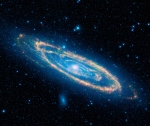 I asked God a question one night. Are there any other “people” – not human beings, not angels or demons, but some other intelligent species – in heaven? *
I asked God a question one night. Are there any other “people” – not human beings, not angels or demons, but some other intelligent species – in heaven? *
I didn’t really expect an answer.
Having read a great deal of science fiction growing up, and now reading about space scientists and astronomers discovering myriads of new galaxies they never suspected before, it seemed illogical to me and to many other people to suppose no other intelligent creatures existed anywhere.
And if they did, in whatever universe or dimension they call home, do they have religions, some version of right and wrong, conscience, awareness of sin or knowledge of God?
“Is that one question or many?” he responded. “Is that a serious question?”
Well, if we can actually discuss this, yes, it is a serious question, I said. If they exist, are some of them in heaven?
“Yes. Next question?”
In a phone conversation recently, my son commented that my descriptions of heaven are all from a physics-physical human viewpoint. Yes, up to now I have limited my descriptions here to the easily describable.
But I do understand why apostles John and Paul and prophet Ezekiel had such trouble describing what they saw and heard. Why some of those things were “unlawful” for them to share with others.
How do you describe a cloud room?
One of my follow-up questions had to do with whether it was possible to interact with non-human species in heaven who do not look, speak, understand, exist, operate, move, breathe — in other words, who do not function in any way, shape or form like human beings.
Angels good and bad are spirit beings who can appear in physical form. They can exist in our dimension, our galaxy, our universe. Sometimes they look like ordinary people. Sometimes they look like scary supernatural creatures, but interaction with them isn’t a problem for human beings.
But suppose an entity moved an inch a year when crossing a room? Or was composed of atoms so far apart that their arm was a thousand miles long and invisible to the human eye? Or their lifespan was a fraction of a second, in human time?
Suppose they had a crystalline structure and looked like a hunk of rock or grain of sand? Or had a plant-like form such as algae, or existed only in liquid or fire?
Suppose when they spoke, even if the language could be translated, the sound resembled the mere memory of an echo?
God didn’t say or show me what any of them looked like or operated like so I have no real idea. But he did tell me that the differences made ordinary interaction impossible, therefore he had created what I call a cloud room.
Now, it’s not an actual cloud or even a room; it’s an inter-dimensional area that somehow obliterates the differences between species and makes communication feasible. Cloud room is the closest I could come to describing that place.
It removes horror, and repugnance, and even morbid curiosity. It suspends the barriers of time and size and space in order that learning can occur. The only reason for its existence is discovery and education, innovation and invention.
He gave me a glimpse of this location, and all I can say is – it was like extremely nearsighted me looking at something or someone at a distance without my glasses. Nothing focuses. Everything’s blurry.
Not everything I have seen and heard of heaven can be described in purely physical, human terms. This is one example, and one reason why I don’t include some other things here. But I thought it was fascinating.
———————————–
* FYI – I’m not going to argue theological questions this question and answer is bound to raise with some.


